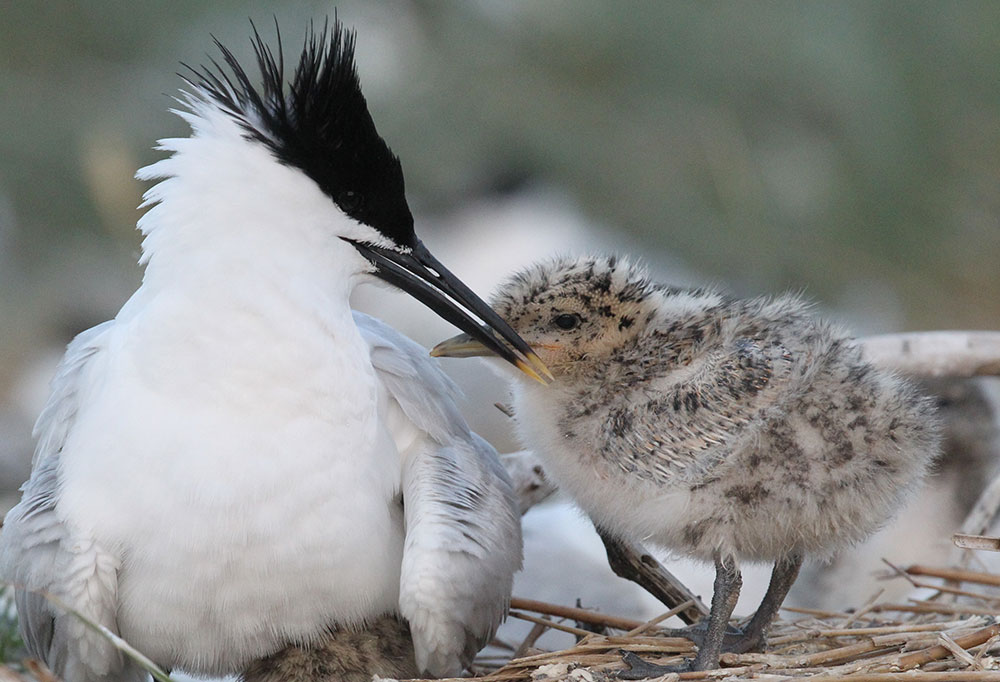Ulrich Knief
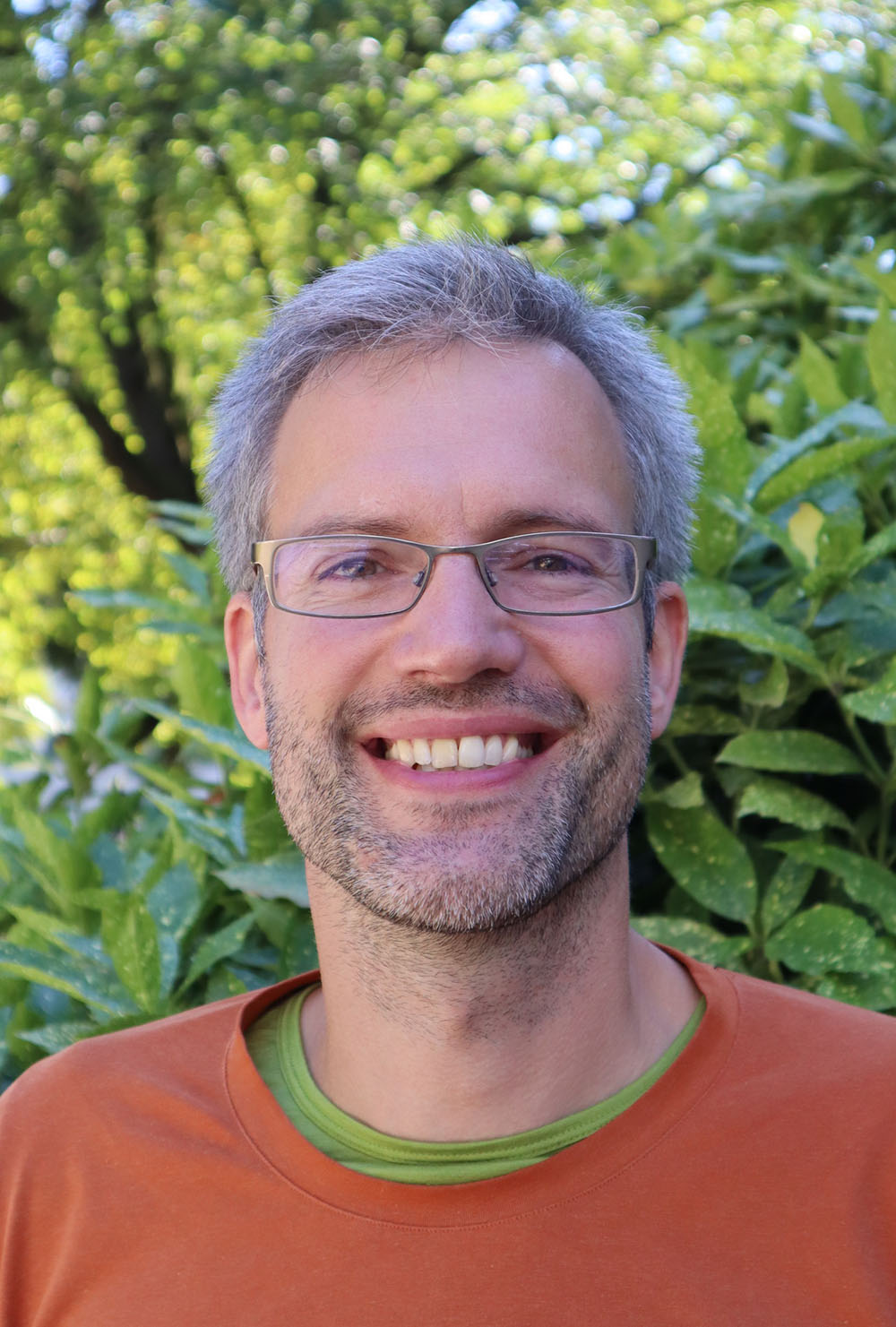 Dr. Ulrich Knief
Dr. Ulrich KniefUniversity of Freiburg
Biology I, Evolution & Ecology
Hauptstraße 1, Room 1038
D-79104 Freiburg
Phone. ++49/761/203-2911
Research interests
I am an evolutionary biologist who studies genetic, phenotypic and cultural diversity within and between species. My main interest is in the selective forces maintaining within-species variability and promoting between-species divergence despite ongoing gene (and meme) flow between hybridizing species.
Speciation in hybrid zones
The origin of species is probably among the most fundamental questions in biology. Black carrion and grey hooded crows (Corvus corone and C. cornix) form narrow hybrid zones in Central Europe. We used naturally occurring hybrids between these incipient species to gain insights in the genetic barriers separating them. We found that imprinting (learning) on genetically determined plumage color separates the two species, thereby keeping the hybrid zone narrow without invoking any postzygotic costs of hybridization.

Plumage color variation and genotypes at causative loci in hybrids between carrion
and hooded crows (courtesy of Dan Zetterström, modified by Joshua Peñalba).
Can reproductive isolation and ultimately speciation also be driven by cultural traits that are learned from conspecifics? Birdsong is an excellent system for studying cultural speciation because it is learned in most oscine passerines (“songbirds”) and it is the target of culturally transmitted mating preferences by the opposite sex. Therefore, birdsong can be subject to sexual selection, which may lead to the build-up of prezygotic barriers to gene flow and eventually to reproductive isolation between populations, initiating speciation. However, the extent to which culture affects the evolution of new species is currently debated.
Alpine and willow tits (Poecile montanus montanus and P. m. salicarius) are an excellent model system to study the impact of culturally transmitted birdsong on genetic divergence because they (1) have different song types that are monomorphic across vast geographic areas, (2) have a simple song structure, which is readily classifiable, and (3) repeatedly form narrow hybrid zones where different song types meet and subspecies interbreed.
Like other mating signals, birdsong is associated with the speciation process, either as a product of it or as a driving force. We will disentangle these two scenarios using the latest genomic and innovative behavioral assays in alpine and willow tits. Thereby, we will evaluate the importance of culture for the evolutionary process, as culture operates through radically different mechanisms than the genetic inheritance system.
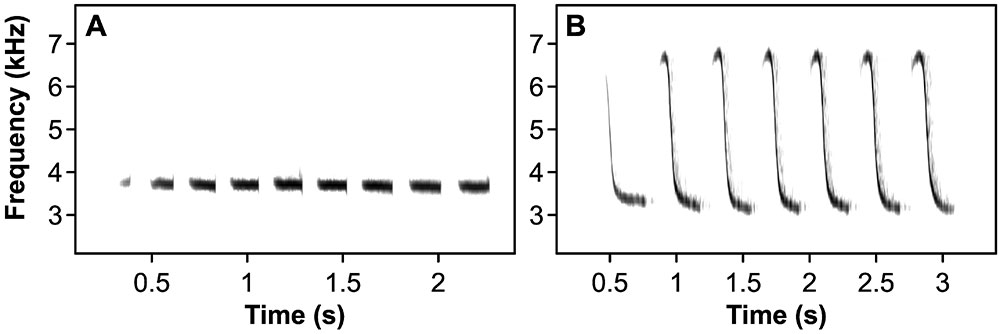
Spectrograms of (A) alpine and (B) willow tit song syllables.
Causes and consequences of genetic inversions
Chromosomal inversions drive evolutionary change and contribute to speciation, as they shield large chromosomal segments from recombining with the alternate haplotype. Because of that, they can link co-adapted gene complexes or beneficial alleles, thereby creating so-called supergenes that may spread in a population due to positive selection. Yet polymorphic inversions are ubiquitously found within species, showing no signs of directional selection but are instead retained over long times. Inversions could be prevented from spreading to fixation within a population because they capture, accumulate or be themselves recessive deleterious mutations. Likewise, a heterozygote advantage, negative frequency dependent selection, antagonistic pleiotropy, mate choice or varying selection along ecological gradients could balance within-species inversion polymorphisms.
Across the avian phylogeny, most inversions have been described in the Estrildid finches, which include the genera Taeniopygia and Lonchura. Estrildids radiated rapidly in several parts of the world and inversions may have contributed to reproductive isolation and speciation. Thus, Estrildid finches make an excellent model system to characterize inversions using genomic techniques, and to study their population genetic effects and biogeographic distribution.
In past and current research projects, we found that zebra finches (Taeniopygia guttata) harbor at least six polymorphic inversions. Using captive and wild populations, we found that these inversions seem to be stabilized through overdominance and sexually antagonistic pleiotropy. In the genus Lonchura, we recently discovered four trans-species polymorphic inversions that recapitulate biogeography and may be stabilized through selection along ecological gradients.
Our research on structural genomic variation in this avian clade utilizes the large effect sizes that result from linking hundreds of allelic variants within an inversion. Because of that, inversions enable us to link genetic polymorphism with phenotypic and ultimately fitness effects. Overall, our research highlights how various forms of selection shape genomic architecture and stabilize genetic polymorphism.
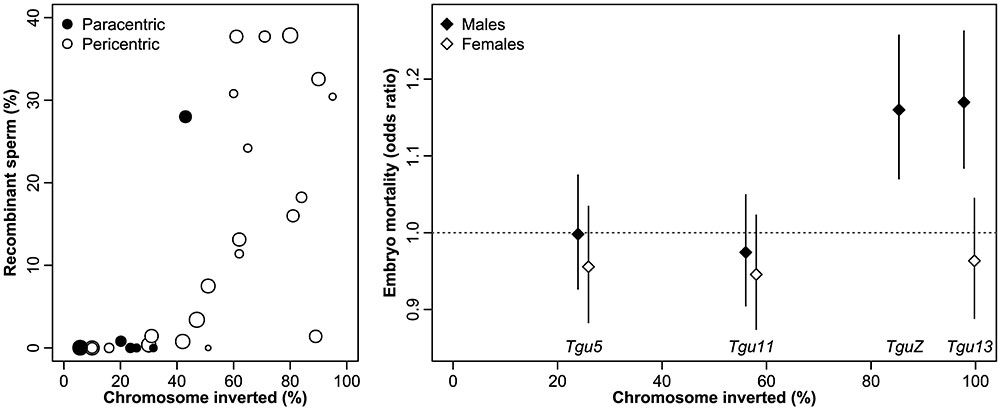
Inversions impact fitness in humans and zebra finches by increasing the proportion of abnormal sperm and embryo mortality rate in heterozygous male carriers.
Applied statistics
The replication crisis has spread through many scientific disciplines and is partly caused by the unconscious use of inappropriate statistical methods. We use simulations and statistical modelling to highlight problematic statistical methodology and to provide guidance on how to improve the robustness of statistical analyses.
Other topics
I am interested in behavioral and conservation biology and contributed to several studies looking at individual differences in the behavior of orang-utans (Pongo spp.), at inbreeding effects in captive and wild zebra finches and at species ecology and conservation in various avian species. In 2007, I set up a long-term avian field project on sandwich terns (Thalasseus sandvicensis), in which I look at breeding success and survival. In 2022, all major European sandwich tern colonies were hit by avian influenza, causing mass mortality of chicks and adults. I am currently analyzing factors that contribute to this epidemic on a European-wide scale and will continue monitoring the spread of the infection.
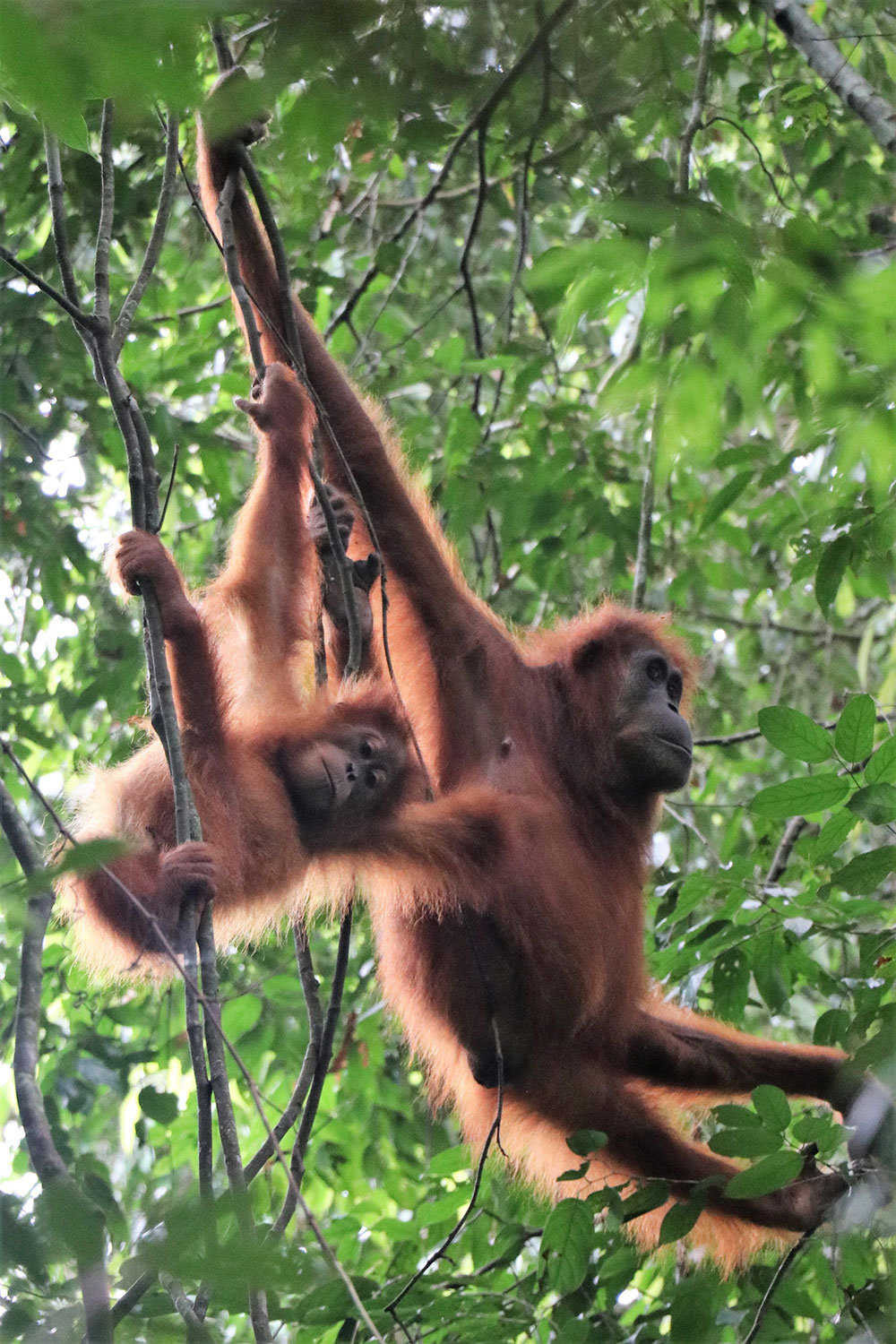
An orang-utan mother interacting with her
offspring (photo by Marlen Fröhlich).
offspring (photo by Marlen Fröhlich).
Sandwich terns breeding in the Wadden Sea
(photo by Ulrich Bolm-Audorff).
Short CV
- 2022 – present: Assistant professor, University of Freiburg, Freiburg, Germany. Speciation through cultural traits
- 2016 – 2022 [2019–2021 parental leave]: Post doc, Ludwig Maximilian University, Munich, Germany. Chromosome structure and the evolutionary origins of structural variants in avian genomes.
- 2016: Post doc, Max Planck Institute for Ornithology, Seewiesen, Germany. Fitness consequences of structural variants in the zebra finch genome.
- 2010 – 2016: PhD student, International Max Planck Research School for Organismal Biology (IMPRS), Max Planck Institute for Ornithology, Seewiesen, Germany. Quantitative and molecular genetics of phenotypic variation in the zebra finch.
- 2005 – 2010: Diploma in biology (zoology, cell biology, mathematics), Kiel University, Kiel, Germany.
Selected Publications
For a full list, please see https://scholar.google.de/.
- Fröhlich M, CP van Schaik, MA van Noordwijk, U Knief 2022: Individual variation and plasticity in the infant-directed communication of orang-utan mothers. Proceedings of the Royal Society B 289: e20220200. Link [OA = open access]
- Pei Y, W Forstmeier, FJ Ruiz-Ruano, JC Mueller, J Cabrero, JPM Camacho, JD Alché, A Franke, M Hoeppner, S Börno, I Gessara, M Hertel, K Teltscher, U Knief, A Suh, B Kempenaers 2022: Occasional paternal inheritance of the germline-restricted chromosome in songbirds. Proceedings of the National Academy of Sciences of the USA 119: e2103960119. Link [OA]
- Knief U & W Forstmeier 2021: Violating the normality assumption may be the lesser of two evils. Behavior Research Methods 53: 2576–2590. Link [OA]
- Weissensteiner MH, I Bunikis, A Catalán, KJ Francoijs, U Knief, W Heim, V Peona, SD Pophaly, FJ Sedlazeck, A Suh, VM Warmuth, JBW Wolf 2020: Discovery and population genomics of structural variation in a songbird genus. Nature Communications 11: e3403. Link [OA]
- Knief U1 , CM Bossu1, N Saino, B Hansson, J Poelstra, N Vijay, M Weissensteiner, JBW Wolf 2019: Epistatic mutations under divergent selection govern phenotypic variation in the crow hybrid zone. Nature Ecology & Evolution 3: 570–576. Link1contributed equally
- Knief U, W Forstmeier, Y Pei, M Ihle, D Wang, K Martin, P Opatová, J Albrechtová, M Wittig, A Franke, T Albrecht, B Kempenaers 2017: Strong heterotic effects of a sex-chromosome inversion on sperm characteristics and siring success. Nature Ecology & Evolution 1: 1177–1184. Link
- Knief U, B Kempenaers, W Forstmeier 2017: Meiotic recombination shapes precision of pedigree- and marker-based estimates of inbreeding. Heredity 118: 239–248. Link
- Knief U, H Schielzeth, N Backström, G Hemmrich-Stanisak, M Wittig, A Franke, SC Griffith, H Ellegren, B Kempenaers, W Forstmeier 2017: Association mapping of morphological traits in wild and captive zebra finches: reliable within but not between populations. Molecular Ecology 26: 1285–1305. Link
- Knief U, W Forstmeier 2016: Mapping centromeres of microchromosomes in the zebra finch (Taeniopygia guttata) using half-tetrad analysis. Chromosoma 125: 757–768. Link [OA]
- Knief U, G Hemmrich-Stanisak, M Wittig, A Franke, SC Griffith, B Kempenaers, W Forstmeier 2016: Fitness consequences of polymorphic inversions in the zebra finch genome. Genome Biology 17: e199. Link [OA]
- Lindholm AK, KA Dyer, RC Firman, L Fishman, W Forstmeier, L Holman, H Johannesson, U Knief, H Kokko, AM Larracuente, A Manser, C Montchamp-Moreau, VG Petrosyan, A Pomiankowski, DC Presgraves, LD Safronova, A Sutter, RL Unckless, RL Verspoor, N Wedell, GS Wilkinson, TAR Price 2016: The ecology and evolutionary dynamics of meiotic drive. Trends in Ecology & Evolution 31: 315–326. Link
- Knief U, G Hemmrich-Stanisak, M Wittig, A Franke, SC Griffith, B Kempenaers, W Forstmeier 2015: Quantifying realized inbreeding in wild and captive animal populations. Heredity 114: 397–403. Link


